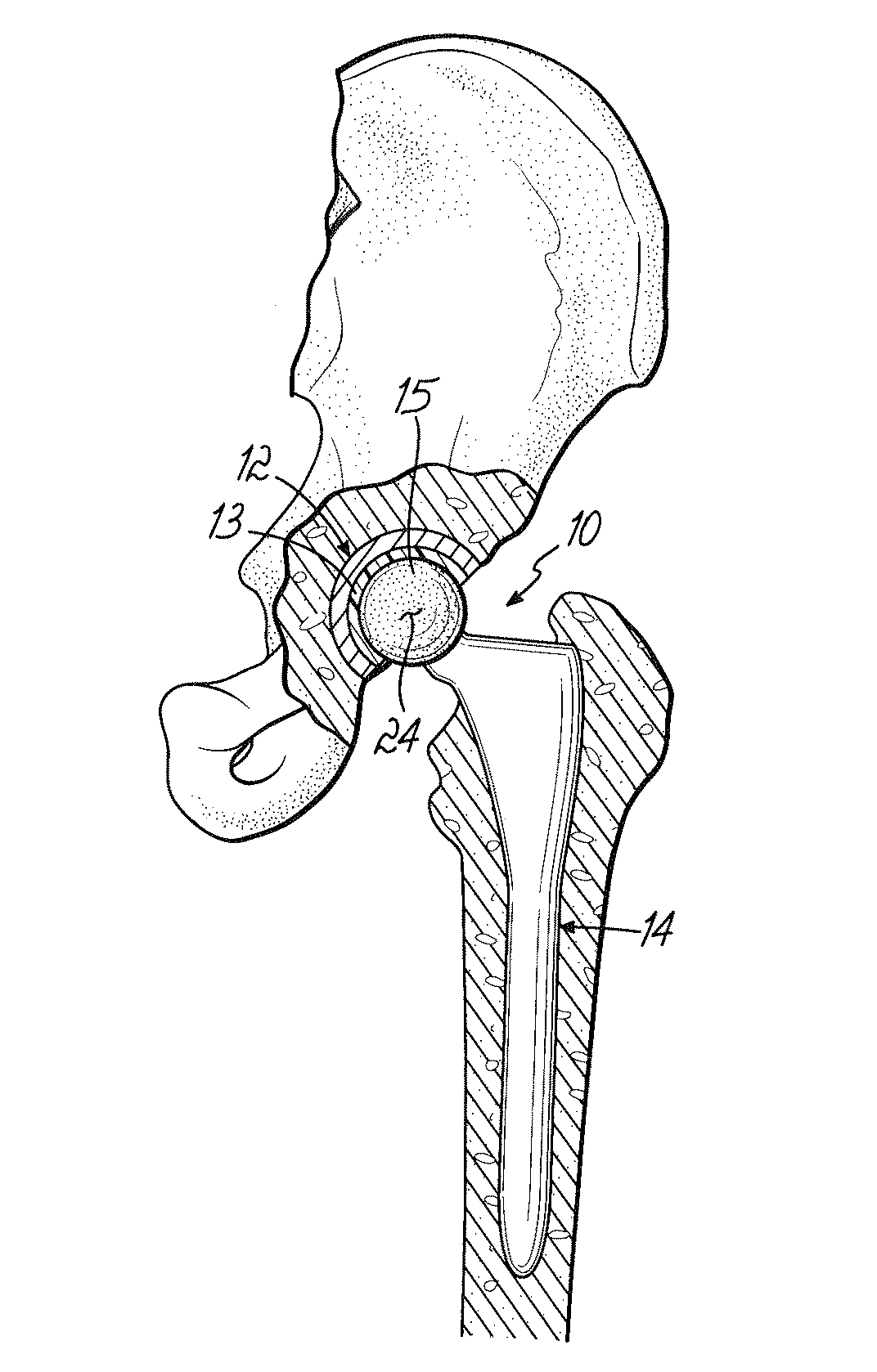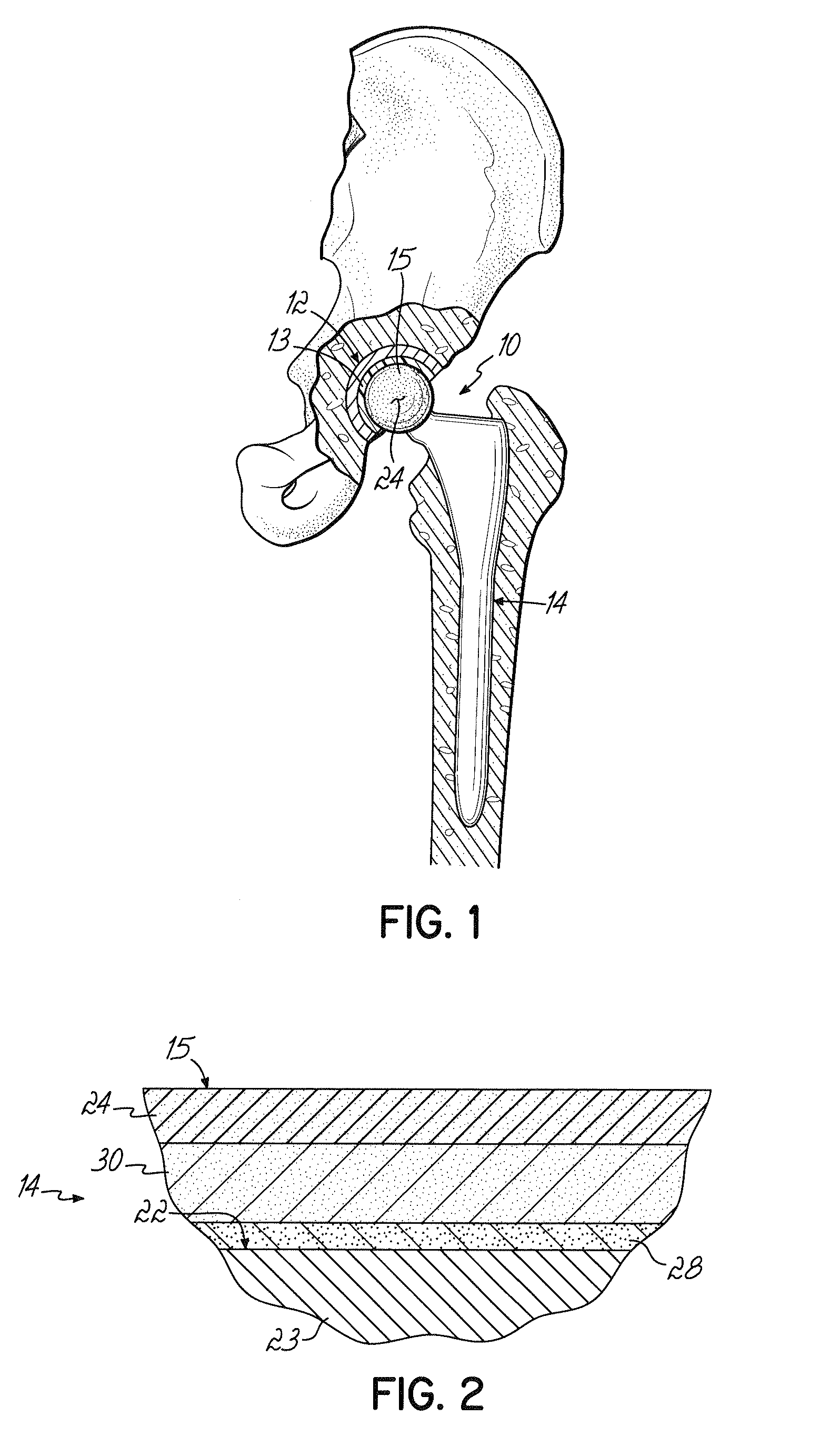Titanium alloy with oxidized zirconium for a prosthetic implant
a technology of titanium alloy and prosthetic device, which is applied in the field of implantable prosthetic device, can solve the problems of increased wear, allergic reaction, and increased brittleness and achieve the effect of reducing the wear between the two members of the prosthetic devi
- Summary
- Abstract
- Description
- Claims
- Application Information
AI Technical Summary
Benefits of technology
Problems solved by technology
Method used
Image
Examples
example
[0022]A substrate of Ti-6% A1-4% V (weight percentages) was polished on one face to a roughness of less than 2 μin (Ra—average surface roughness).
[0023]A layer of Zr of thickness approximately 7 μm was deposited on the polished substrate surface by arc-evaporated physical vapor deposition, in which an electrical arc was established on the surface of a Zr target. The evaporated Zr ions were extracted to the Ti-alloy substrate (through an applied bias voltage) and deposited on the polished surface.
[0024]The specimen was heated in an inert argon atmosphere to 549° C. At that point the argon was replaced with flowing air, and heating continued to 582° C. The specimen was held at 582° C. for 4 hours and then cooled rapidly in argon to room temperature.
[0025]The now-oxidized specimen was sectioned and examined.
[0026]The chemical variations of Zr, O, Ti, Al and V were measured in the processed specimen. The chemical profile of the oxidized specimen suggests a zirconium-oxidized layer (most...
PUM
| Property | Measurement | Unit |
|---|---|---|
| thickness | aaaaa | aaaaa |
| thickness | aaaaa | aaaaa |
| temperature | aaaaa | aaaaa |
Abstract
Description
Claims
Application Information
 Login to View More
Login to View More - R&D
- Intellectual Property
- Life Sciences
- Materials
- Tech Scout
- Unparalleled Data Quality
- Higher Quality Content
- 60% Fewer Hallucinations
Browse by: Latest US Patents, China's latest patents, Technical Efficacy Thesaurus, Application Domain, Technology Topic, Popular Technical Reports.
© 2025 PatSnap. All rights reserved.Legal|Privacy policy|Modern Slavery Act Transparency Statement|Sitemap|About US| Contact US: help@patsnap.com


